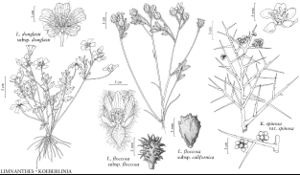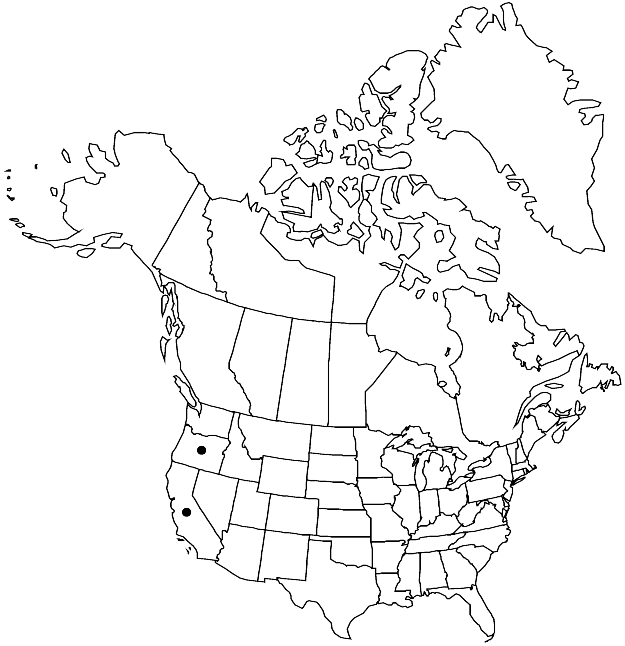Difference between revisions of "Limnanthes douglasii subsp. douglasii"
FNA>Volume Importer |
imported>Volume Importer |
||
| (5 intermediate revisions by 2 users not shown) | |||
| Line 1: | Line 1: | ||
{{Treatment/ID | {{Treatment/ID | ||
|accepted_name=Limnanthes douglasii subsp. douglasii | |accepted_name=Limnanthes douglasii subsp. douglasii | ||
| − | |accepted_authority= | + | |accepted_authority= |
|publications= | |publications= | ||
| + | |special_status={{Treatment/ID/Special_status | ||
| + | |code=F | ||
| + | |label=Illustrated | ||
| + | }}{{Treatment/ID/Special_status | ||
| + | |code=E | ||
| + | |label=Endemic | ||
| + | }} | ||
|basionyms= | |basionyms= | ||
|synonyms= | |synonyms= | ||
| Line 29: | Line 36: | ||
-->{{#Taxon: | -->{{#Taxon: | ||
name=Limnanthes douglasii subsp. douglasii | name=Limnanthes douglasii subsp. douglasii | ||
| − | + | |authority= | |
| − | |authority= | ||
|rank=subspecies | |rank=subspecies | ||
|parent rank=species | |parent rank=species | ||
| Line 43: | Line 49: | ||
|publication title= | |publication title= | ||
|publication year= | |publication year= | ||
| − | |special status= | + | |special status=Illustrated;Endemic |
| − | |source xml=https:// | + | |source xml=https://bitbucket.org/aafc-mbb/fna-data-curation/src/2e0870ddd59836b60bcf96646a41e87ea5a5943a/coarse_grained_fna_xml/V7/V7_215.xml |
|genus=Limnanthes | |genus=Limnanthes | ||
|section=Limnanthes sect. Limnanthes | |section=Limnanthes sect. Limnanthes | ||
Latest revision as of 22:32, 5 November 2020
Leaflets: blade linear to ovate, margins entire, irregularly toothed, or lobed. Flowers cup- or bell-shaped; sepals narrowly lanceolate-ovate, 6–9 mm; petals yellow with white tips (veins yellow), obovate-cuneate, 12–18 mm, (apex deeply emarginate); filaments 6–7 mm; anthers cream, yellow, or reddish brown, oval, 1.1–1.5 mm. Tubercles absent or not (or 1 row of whitish globules on ridges and crests), brown, lamellar, planar, or conical. 2n = 10.
Phenology: Flowering Mar–Jun.
Habitat: Wet meadows
Elevation: 0-700 m
Discussion
Subspecies douglasii is common in vernal pools and moist areas in the Coast Ranges from San Benito County to Humboldt County in California, and in the Umpqua Valley. A disjunct population occurs in the Sierra Nevada foothills near Honcut in Butte County, California.
R. V. Kesseli and S. K. Jain (1984b) found clusters of populations in the Inner Coast Ranges, predominantly Mendocino and Lake counties (“inland”), that they considered to be intermediate between Limnanthes douglasii subspp. douglasii and nivea, and clusters of those two subspecies plus subsp. sulphurea in coastal areas (“coastal”). Inland plants had open, usually smaller flowers than the coastal group, with petals ca. 13 mm, white or pale, or dark yellow-centered, the yellow extending from the base over half of the petal length and fading to white, and apical notch rounded. These populations flowered later and had narrower leaflets than the coastal cluster. The coastal cluster had a high frequency of one allele that was absent in the inland cluster. The coastal group had larger flowers, petals ca. 14.7–16 mm, obcordate, completely dark yellow- to yellow-centered (the yellow extending from the base less than half the length of the petal, sharply demarcated from the white part) or white, with earlier flowering and broader leaflets. These studies indicate that the easily recognizable flower color patterns used to characterize subsp. douglasii may not reflect genetic affinities. Additional research is warranted. Kesseli and Jain found also that the Oregon populations of subsp. douglasii had alleles that were rare or nonexistent in all other subspecies of L. douglasii, and that these populations had distinctive nutlets (possibly more similar to L. bakeri and L. vinculans) and shorter stamens and styles than usual in subsp. douglasii.
Selected References
None.

